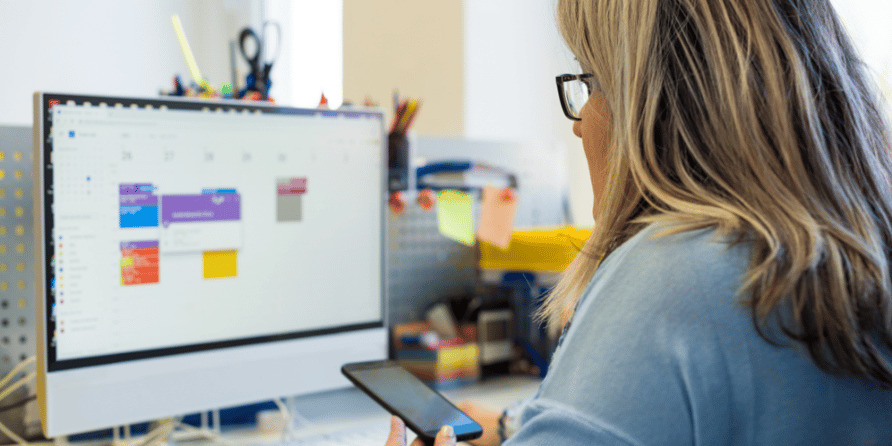
Community health centers (CHCs) served more than 30 million people in the U.S. in 2021, offering quality, accessible, and affordable care for the nation’s most vulnerable patients. Many CHC patients are impacted by one or more of the social determinants of health (SDOH), which have a significant impact on health outcomes and behaviors.
Fortunately, CHCs can take steps to accommodate patients facing SDOH-related challenges and optimize engagement in the process. Let’s discuss the impact of smartphones and how CHCs can optimize patient engagement for mobile devices.
The Impact of Smartphone Use on CHC Patients
Healthcare has gone digital in recent years, with more and more consumers using mobile devices to access healthcare services and medical records. In fact, most healthcare leaders would argue that the future of healthcare is mobile.
Providing solid virtual care is essential for reducing health disparities, improving population health, and achieving greater health equity as a whole. This is especially important for the patients that CHCs predominately serve, many of whom lack access to a personal computer (PC). Some even lack reliable internet access.
However, 85 percent of Americans own a smartphone, and 97 percent own a cell phone of some kind. That’s why utilizing smartphones and offering an exceptional mobile healthcare experience is key to improving patient engagement and activation.
Using Smartphones to Maximize Community-Based Healthcare
Here are four ways CHCs can optimize patient engagement for smartphones:
1. Mobile-Optimized Patient Portals
Most community health centers offer what has become standard in healthcare today: access to a portal where patients can self-schedule appointments, pay medical bills, view medical records, request prescription refills, communicate with providers, and more.
However, most patient portals were originally designed for PC interfaces. Optimizing patient engagement for mobile devices is the next step for CHCs looking to eliminate the barriers to care so often faced by patients in underserved communities.
In addition to redesigning portals so they’re accessible—and offer a great user experience—via smartphones, CHCs should also offer secure single sign-on to make logging in fast and easy. Fingerprint and facial biometrics are especially convenient, giving users quick, seamless access to health information, tools, and providers.
2. Easy Virtual Visits on Smartphones
During the COVID-19 pandemic, 99 percent of health centers nationwide offered telehealth or virtual visits. New federal and state policies have led to increased utilization, expanding access to care for countless Americans. That momentum has only continued in the wake of the pandemic, with most CHCs continuing to offer virtual visits.
To maintain and increase telehealth adoption, CHCs should ensure their technology works seamlessly on smartphones. For patients who lack a reliable internet connection, CHCs can also offer audio-only visits, which can further improve care access and expand reach to vulnerable populations.
3. Patient Outreach via Text Message
CHCs can boost engagement by using text messaging to communicate with their patients. A recent survey revealed that 85.6 percent of patients preferred text updates over emails, phone calls, and patient portal messages. What’s more, 95.5 percent of patients felt more connected to their care team as a result.
With patient engagement technology, CHCs can use bidirectional text messaging to send appointment reminders, payment reminders, and location announcements. Text messaging is also a great way to put patients directly in touch with providers, who can educate them and answer questions on chronic conditions, medication adherence, healthy lifestyle choices, and more.
4. Seamless Population Health Integration
Smartphones can also play a substantial role in population health management, building on existing initiatives to boost engagement. Using patient engagement technology that integrates seamlessly with electronic health records and practice management systems, CHCs can deploy automated surveys to assess things such as patient satisfaction, patient-reported outcomes, and functional status.
Patients can complete surveys on a smartphone where they’re most active, and CHC providers can monitor each individual’s social determinants of health alongside their clinical profile. From there, CHCs can automate the delivery of interventions via text message to stay connected to patients between appointments and motivate them to become active participants in their own health.
Using Mobile-Optimized Patient Engagement Technology
While it’s no secret that CHCs face unique challenges, smartphones are helping to bridge care gaps and improve quality and access for even the most vulnerable populations. With the right technology and a comprehensive mobile strategy, CHCs can improve patient engagement, enhance population health initiatives, and help achieve healthier outcomes for all of the patients and communities they serve.
To learn more about engaging with patients, check out our eBook, How to Promote Patient Engagement at Every Step of the Patient Journey.

